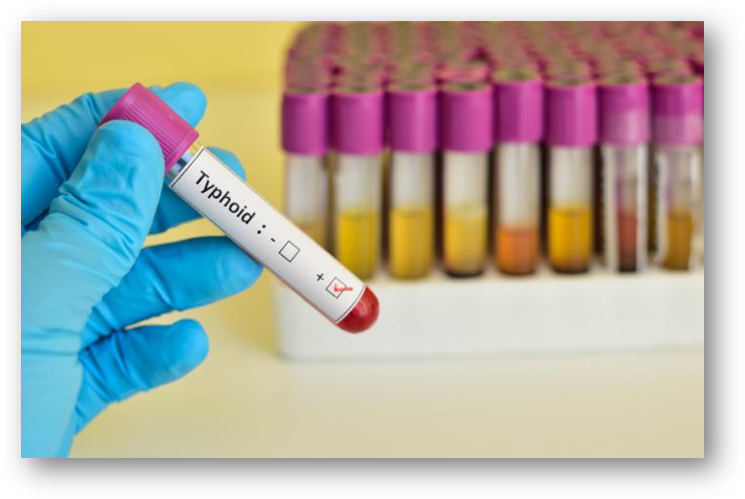
How To Get Rid Of Typhoid Fever By Ayurvedic Treatment?
Typhoid fever is that can spread throat bacterial infection out the body, affecting many organs.

Typhoid fever is that can spread throat bacterial infection out the body, affecting many organs.
अथ संशोषिसन्निपातलक्षणमाहपरतिमेचक-लोचनयुगलो मलोत्सर्गात्। संशोषिणि सितपिडिका-मण्डलयक्तो ज्वरे नरो भवति ॥५२२॥ संशोषी सन्निपात ज्वर के लक्षण-संशोषी सन्निपात ज्वर में रोगी का शरीर अधिक दस्त आने से काला पड़ जाता है तथा दोनों नेत्र भी अत्यन्त काले हो जाते हैं। और शरीर में सफेद-सफेद फुसियों का मण्डल उत्पन्न हो जाता है।
BY Ayurveda
Typhoid fever is caused by Salmonella typhi bacteria. Typhoid fever is rare in developed countries.Typhoid fever is not mentioned ‘as it is’ in Ayurveda; there are many schools of thought in explaining the description of Typhoid fever.
It may correlated to “Sannipata jwara” in general. Some opine that it matches a condition described as Santata Jwara – one of the types of Vishama jwara described by Acharya Charaka. Charaka categorically mentions that a jwara (fever) with an imbalanced spread all across the body through rasavaha strotas (blood vessels) causes stiffness.
Salmonella typhi is passed in feces or urine of infected people. bacteria pass from feces to food and food to the human body through oral consumption of contaminated food. Therefore it is called fecal-oral transmission route.
*’शमयेत् पित्तमेवादी ज्वरेषु समवायिषु । दर्निवारतमं तद्धि ज्वरातेषु विशेषतः ॥२३॥
*यत्पुनस्तन्त्रान्तरेऔर जो किसी-किसी ग्रन्थों में यह पाया जाम यह पाया जाता है कि सन्निपात ज्वर में प्रथम पित्त काही शमन करना चाहिया स्योंकि ज्वररोगियों में विशेष करके वही अर्थात पित्त ही निव है अतः सर्वप्रथम पित्त का ही शमन करना चाहिये।।९३।।। अर्थात् पित्त ही निवारण करने में कठिन होता है अर्थात् ज्वर पित्तप्रधान होता है|
by Ayurveda
You can get any Ayurvedic or Panchkarma treatment under one roof, with Private Insurance Facility.
WhatsApp us